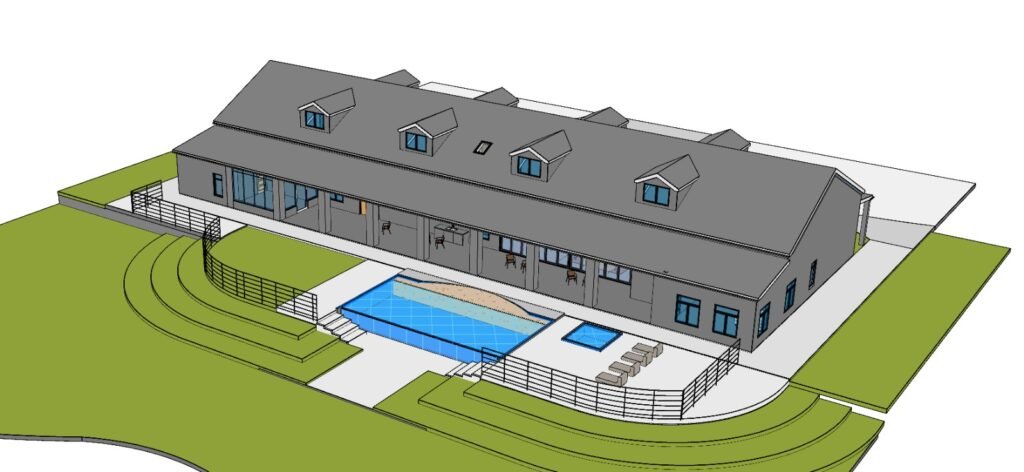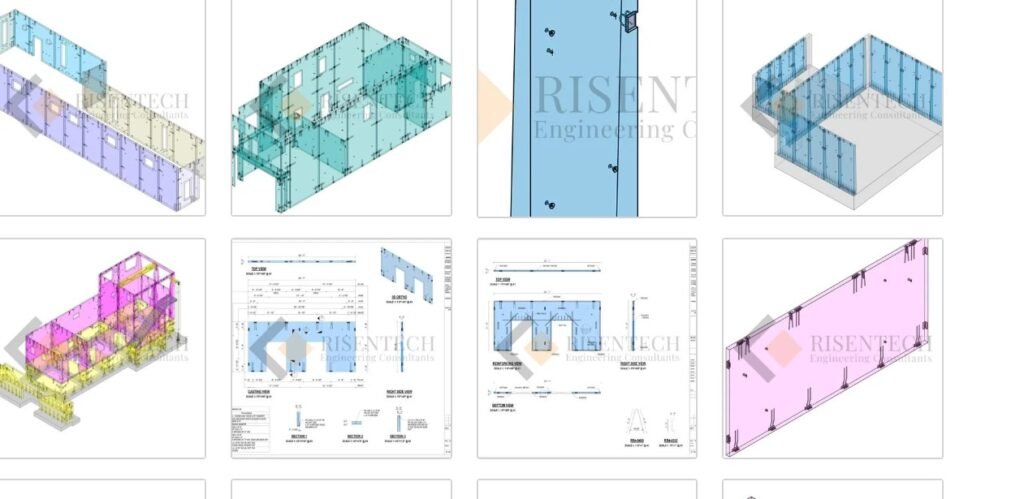In today’s competitive architectural, engineering, and construction (AEC) industry, delivering high-quality projects on time and within budget is paramount. Building Information Modeling (BIM) has become an indispensable tool for achieving these goals. However, BIM modeling itself can be a time-consuming process, potentially hindering your team’s ability to focus on core design and strategic tasks.
This is where outsourcing BIM modeling comes in. By strategically delegating BIM modeling tasks to a qualified external partner, you can unlock a wealth of benefits, including:
- Increased Efficiency and Productivity: Offloading BIM modeling frees up your in-house team to concentrate on high-value activities like design development, client communication, and project management. This leads to a more streamlined workflow and faster project turnaround times.
- Cost Optimization: Building an in-house BIM modeling team requires investment in software, hardware, and training. Outsourcing eliminates these upfront costs and allows you to pay only for the specific services you need.
- Access to Specialized Expertise: BIM service providers often have a team of experienced modelers proficient in the latest software and industry best practices. You can leverage this expertise to enhance the quality and accuracy of your BIM models.
- Scalability: Outsourcing allows you to scale your BIM modeling resources up or down based on project demands. This flexibility is particularly beneficial for firms with fluctuating workloads.
- Reduced Risk of Errors: Experienced BIM outsourcing partners have robust quality control processes in place to minimize errors and ensure model consistency. This helps mitigate costly rework and delays.
According to a Dodge Data & Construction Cloud report, 68% of contractors are leveraging BIM on building projects. This statistic underscores the growing importance of BIM in the AEC industry. As BIM adoption continues to rise, the demand for skilled BIM modelers will outpace the available workforce. Outsourcing provides a practical solution to address this talent gap and ensure your firm has the resources needed to stay competitive.
What Can You Outsource in BIM Modeling?
The scope of BIM modeling services you outsource can be tailored to your specific project requirements. Here are some common BIM deliverables that can be outsourced:
- 3D Modeling: This is the core of BIM, encompassing the creation of intelligent 3D models of building components, including walls, floors, ceilings, doors, windows, and MEP systems.
- 4D Scheduling: By linking the 3D model with project data, you can create a 4D scheduling model to visualize and optimize the construction sequence.
- 5D Cost Estimating: BIM models can be used to extract quantities and generate accurate cost estimates, improving project budgeting and cost control.
- Clash Detection: BIM software can identify potential clashes between building elements before construction begins, preventing costly rework on-site.
- Facility Management Models: BIM models can be extended for facility management purposes, enabling efficient maintenance and operation of the building.
Choosing the Right BIM Outsourcing Partner
Selecting a reliable BIM outsourcing partner is crucial for a successful experience. Here are some key considerations:
- Experience and Expertise: Look for a partner with a proven track record in BIM modeling for projects similar to yours. Assess their experience with the specific BIM software you utilize.
- Communication and Collaboration: Effective communication is essential. Ensure the partner has a clear communication strategy and can seamlessly integrate with your team’s workflows.
- Data Security: BIM models contain sensitive project data. Choose a partner with robust data security measures in place to protect your confidential information.
- Cost Structure: Get transparent pricing quotes that outline the deliverables, timeline, and any additional fees.
- Quality Control: Inquire about the partner’s quality control processes and how they ensure the accuracy and consistency of BIM models.
Strategies for Successful BIM Outsourcing
To maximize the benefits of BIM outsourcing, consider these strategies:
- Clearly Define Project Requirements: Clearly communicate your project goals, BIM deliverables, and desired level of detail to your outsourcing partner.
- Establish a Collaborative Workflow: Develop a well-defined communication plan and establish regular progress check-ins to ensure seamless collaboration.
- Invest in Training: Provide your internal team with basic BIM knowledge to facilitate communication and collaboration with the outsourcing partner.
- Leverage Technology: Utilize collaboration tools and cloud-based platforms to facilitate efficient file sharing and model updates.
- Maintain Quality Control: Implement a quality control process to review the deliverables from your outsourcing partner. This may involve internal review meetings or utilizing model validation tools.
- Provide Feedback: Provide constructive feedback to your outsourcing partner throughout the project to ensure they are meeting your expectations.
- Build a Long-Term Partnership: A strong, long-term relationship with a reliable BIM outsourcing partner can yield significant benefits in terms of efficiency, expertise, and cost savings.
Beyond Cost Savings: The Strategic Advantages of BIM Outsourcing
While cost optimization is a significant advantage, BIM outsourcing offers more than just financial benefits. It empowers your team to focus on strategic activities that drive innovation and project success. Here’s how:
- Enhanced Design and Innovation: By freeing up your team’s time from repetitive BIM modeling tasks, they can dedicate more energy to creative design exploration and innovative solutions.
- Improved Client Communication: With a streamlined workflow, your team has more bandwidth to engage with clients, address their concerns promptly, and foster stronger relationships.
- Strategic Project Management: Outsourcing allows your project managers to focus on core competencies like planning, risk management, and stakeholder communication, leading to better project outcomes.
- Upskilling Your Workforce: By partnering with a BIM outsourcing expert, your team can gain exposure to best practices and new technologies, fostering continuous learning and professional development.
Incorporating BIM Outsourcing into Your Overall BIM Strategy
For optimal results, view BIM outsourcing as an integral part of your overall BIM strategy. Here’s how to achieve seamless integration:
- Define BIM Goals and Standards: Clearly define your firm’s BIM goals and establish internal standards for model creation, collaboration, and data exchange.
- Standardize File Formats and Workflows: Ensure compatibility with your outsourcing partner by implementing standardized file formats (like IFC) and well-defined communication protocols.
- Invest in BIM Software and Training: Equip your team with the necessary BIM software licenses and training to effectively collaborate with the outsourcing partner and manage BIM data internally.
- Develop a BIM Execution Plan (BEP): Create a comprehensive BEP that outlines roles, responsibilities, communication protocols, and quality control procedures for both internal and outsourced BIM activities.
Conclusion: Focus on What Matters with BIM Outsourcing
By strategically outsourcing BIM modeling, you can empower your team to focus on what truly matters – delivering exceptional design solutions, exceeding client expectations, and achieving project success.
Carefully consider your project requirements, choose a reliable BIM outsourcing partner, and implement a well-defined strategy to unlock the full potential of BIM outsourcing. By doing so, you can streamline your workflow, boost efficiency, and gain a competitive edge in the AEC industry.




